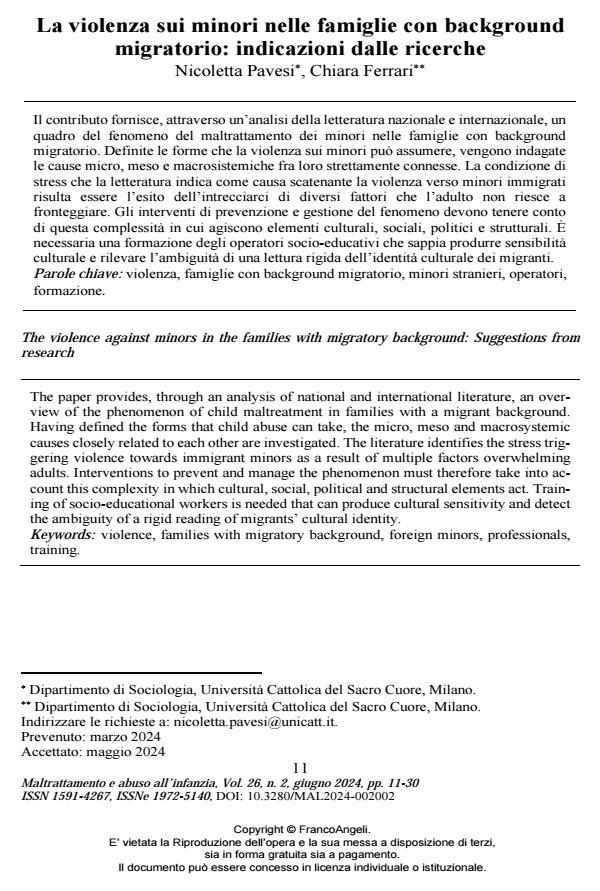The violence against minors in the families with migratory background: Suggestions from research
Journal title MALTRATTAMENTO E ABUSO ALL’INFANZIA
Author/s Nicoletta Pavesi, Chiara Ferrari
Publishing Year 2024 Issue 2024/2
Language Italian Pages 19 P. 11-29 File size 236 KB
DOI 10.3280/MAL2024-002002
DOI is like a bar code for intellectual property: to have more infomation
click here
Below, you can see the article first page
If you want to buy this article in PDF format, you can do it, following the instructions to buy download credits

FrancoAngeli is member of Publishers International Linking Association, Inc (PILA), a not-for-profit association which run the CrossRef service enabling links to and from online scholarly content.
The paper provides, through an analysis of national and international literature, an overview of the phenomenon of child maltreatment in families with a migrant back-ground. Having defined the forms that child abuse can take, the micro, meso and macrosystemic causes closely related to each other are investigated. The literature identifies the stress triggering violence towards immigrant minors as a result of multiple factors overwhelming adults. Interventions to prevent and manage the phenome-non must therefore take into account this complexity in which cultural, social, politi-cal and structural elements act. Training of socio-educational workers is needed that can produce cultural sensitivity and detect the ambiguity of a rigid reading of mi-grants’ cultural identity.
Keywords: violence, families with migratory background, foreign minors, professionals, training.
Nicoletta Pavesi, Chiara Ferrari, La violenza sui minori nelle famiglie con background migratorio: indicazioni dalle ricerche in "MALTRATTAMENTO E ABUSO ALL’INFANZIA" 2/2024, pp 11-29, DOI: 10.3280/MAL2024-002002